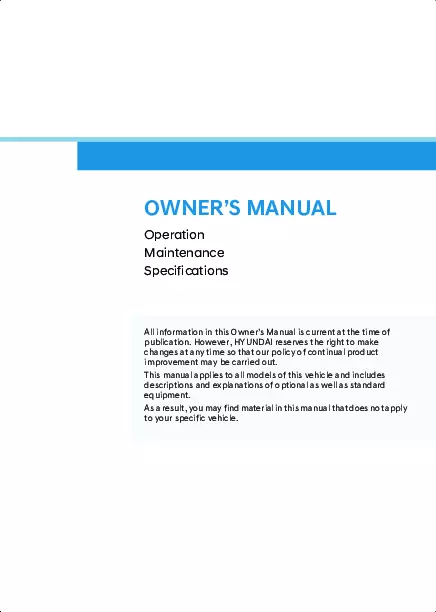2025 Hyundai Ioniq 6 Owner's Manual

Table of Contents
2025 Hyundai Ioniq 6 Overview
Introduction
The 2025 Hyundai Ioniq 6 represents the latest evolution in Hyundai’s commitment to sustainability, combining innovative technology with striking design. With its sleek, aerodynamic silhouette and advanced features, the Ioniq 6 is not just a car, but a statement in the era of electric mobility. This model is designed for those who prioritize both performance and eco-friendliness, making it the perfect choice for the environmentally conscious driver seeking cutting-edge technology and stylish design.
Powertrains
The 2025 Ioniq 6 offers an impressive lineup of powertrains to cater to diverse driving preferences. The standard rear-wheel-drive (RWD) version comes equipped with a single electric motor generating an impressive power output, achieving remarkable acceleration and efficiency. For those seeking enhanced performance, the all-wheel-drive (AWD) variant features dual motors, offering superior traction and exhilarating speed. With a range exceeding 300 miles on a single charge and fast-charging capabilities, the Ioniq 6 ensures that long journeys are hassle-free.
Trims
Hyundai provides various trims for the Ioniq 6, allowing for personalization and choice among drivers. The base SE trim includes essential features, while the SEL and Limited trims add premium comforts and technology enhancements such as an upgraded infotainment system, larger wheels, and premium audio options. Each trim showcases the Ioniq 6’s commitment to luxury and functionality.
Features
The Ioniq 6 is packed with advanced features designed for convenience and safety. A cutting-edge infotainment system, compatible with both Apple CarPlay and Android Auto, seamlessly connects drivers with their digital lives. Safety features encompass Hyundai's SmartSense suite, including adaptive cruise control, lane-keeping assist, and a comprehensive suite of collision mitigation technologies.
Owner's Manual
The 2025 Hyundai Ioniq 6 comes with a detailed owner's manual, offering essential information on vehicle operation, maintenance, and troubleshooting. The manual serves as a valuable resource, guiding owners to maximize their driving experience while ensuring the longevity and performance of their vehicle. With thorough explanations and clear instructions, it empowers Ioniq 6 owners to confidently navigate the electric vehicle landscape.
User manual download
The Hyundai Ioniq 6 owner manual for the 2025 model year is to be found in PDF downloadable format on this page. The owner manual for the model year 2025 is free and in English, but the repair manuals are usually not easy to get and may cost more.
Manual Questions
Fill the form below and someone will help you!
